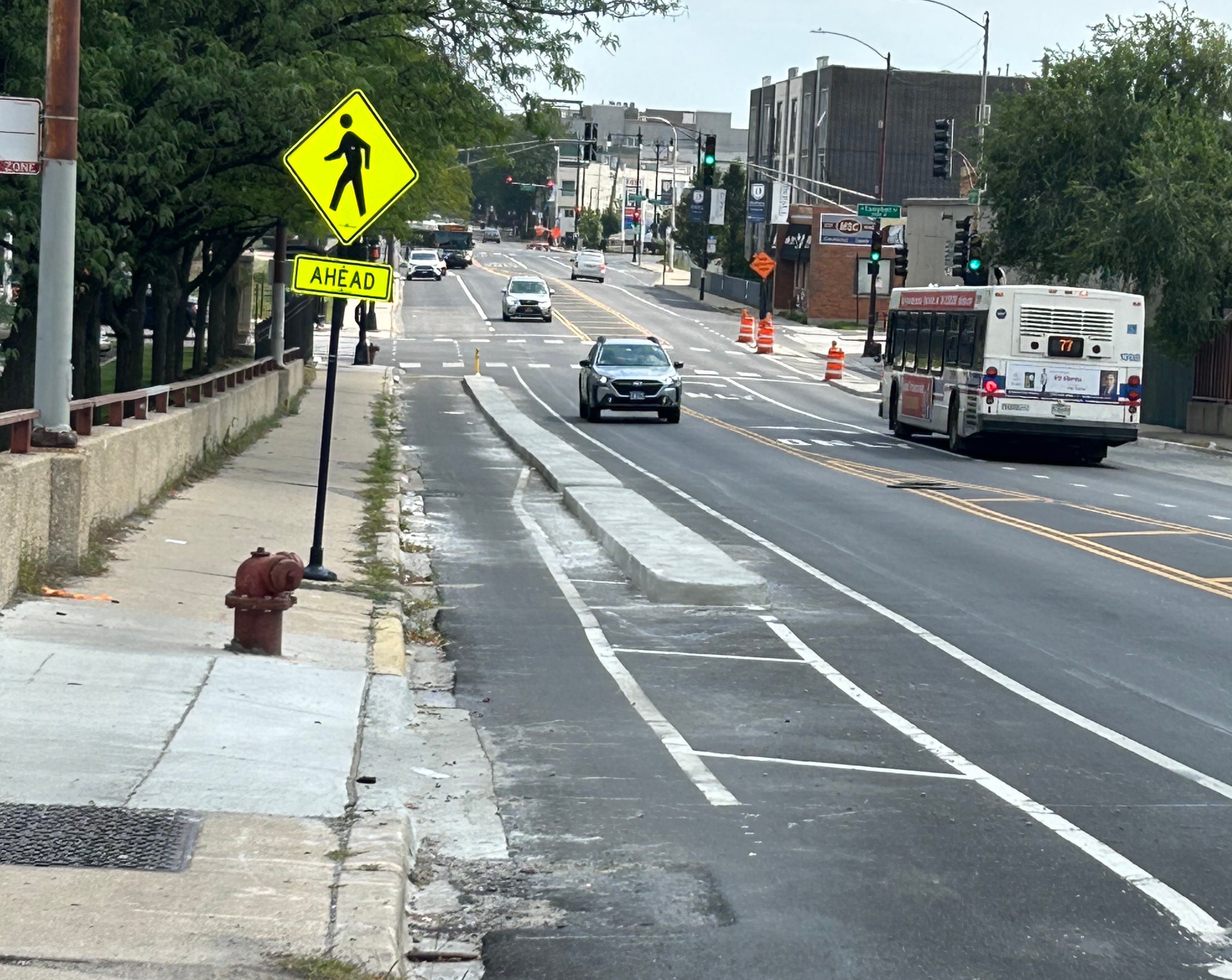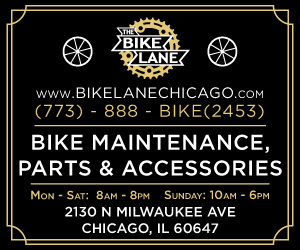
The intersection of Belmont (3200 N.) and Kedzie (3200 W.) avenues used to be one of those confusing, viaduct-beshadowed, high-vehicle traffic spots that even the most seasoned city bike rider white-knuckles their way through. But thanks to new concrete-protected bike lanes on Belmont, one of the city’s most unpleasant and dangerous intersections is now a choice route for people traveling on two wheels.
The new bike lanes run for about a mile from near Kimball Avenue (3400 W.) — a few dozen feet from the Belmont Blue Line station on the south side of the street and a Divvy station on the north— to Campbell Avenue (2500 W.) This Belmont bike corridor lies within the 33rd and 35th wards, represented by alders Rossana Rodriguez-Sanchez and Carlos Ramirez-Rosa, respectively.
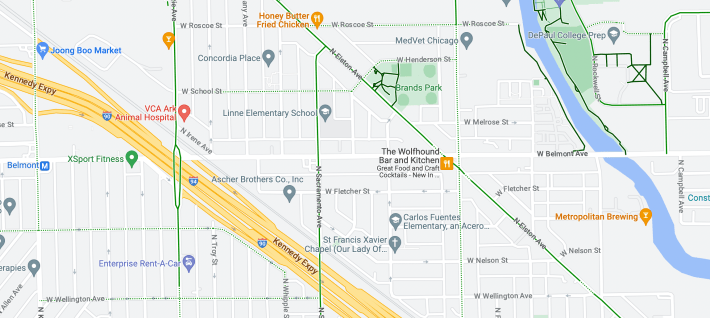
The new Belmont lanes provide safer passage for bike riders across two major impediments: under the Kennedy Expressway and over the north branch of the Chicago River. The bikeway connects several other north-south protected lanes, off-street bike, trails and Neighborhood Greenways, sewing up a few holes in the bike network.
I rode the length of the new lanes, starting from the new protected bike lanes on Kedzie and heading east, then looping back to the western terminus near Kimball. Large pedestrian islands and curb-protected lanes have transformed the wide, low-visibility, high-stress intersection into an orderly experience for those walking, biking, and driving. I was protected by concrete all the way onto Belmont. The protection continues to about a hundred feet before Elston Avenue, a northwest-southeast street where the close proximity of California Avenue (2800 W.) creates a triangle of traffic signals.
The PBL picks up again east California, protected by parking only, with no curbs or bollards to prevent drivers from entering or parking in the bikeway. Happily, all the drivers who had parked when I rode by had respected the paint, their vehicles separating me from fast-moving traffic on Belmont. Curb protection resumed with a large bus boarding island at Rockwell (2600 W.)
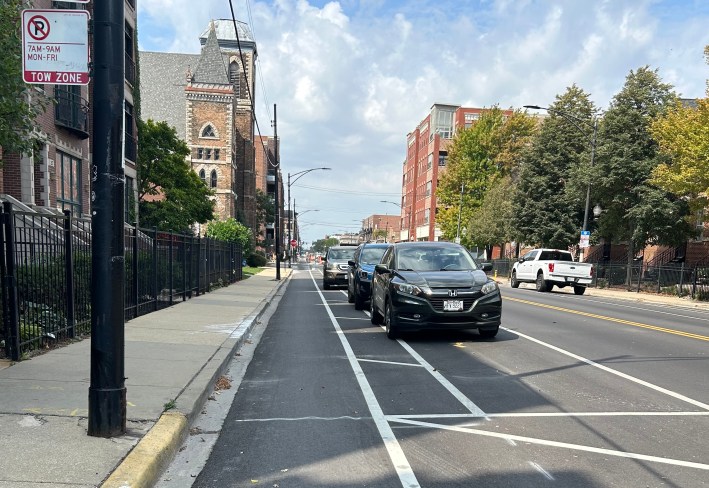
The most notable gap of protection along the route was over the river, where the bike lanes on both the north and south sides of the street are only protected by painted buffer zone. Reduced visibility over the crest of the hill and faster moving traffic unimpeded by stop signs or signals make bridge crossing one of the more stressful experiences for people on bikes, so I was surprised at the absence of physical separation between bikes and cars.
Two years ago, a resident had proposed a protected lane on the Belmont bridge between Rockwell and Campbell as part of the 33rd Ward’s participatory budgeting process. The proposal was rejected because plans were already in motion for Complete Streets improvements to Belmont, in tandem with a street resurfacing project. Hopefully curbs or bollards will be added to this stretch of the street.
Curb protection picks up again just before a bus boarding island at Campbell, joining up with curb-protected lanes on Campbell, which ushers riders two blocks onto Roscoe Street (3400 N.) and a bikeable route eastward. I crossed Belmont at Campbell to ride the westbound PBL and was met with one of the most exciting features of the new facilities: a curb-protected lane that leads to a sidewalk apron at the entrance of the North Branch Riverwalk, part of the 312 RiverRun car-free trail system that runs 1.5 miles through parkland Between Belmont and Montrose Avenue (4400 N.) You can now easily ride onto the sidewalk and down a ramp to the riverwalk without getting off you bike.
The bike lanes on the north side of Belmont are like those on the south: off-and-on curb or parking protection with gaps at the major arterials of California, Elston and Sacramento (3000 W.) A few drivers have complained on social media that the new PBLs have caused traffic backups, mainly due to buses stopping in the travel lane at bus boarding islands instead of pulling over to the curb.
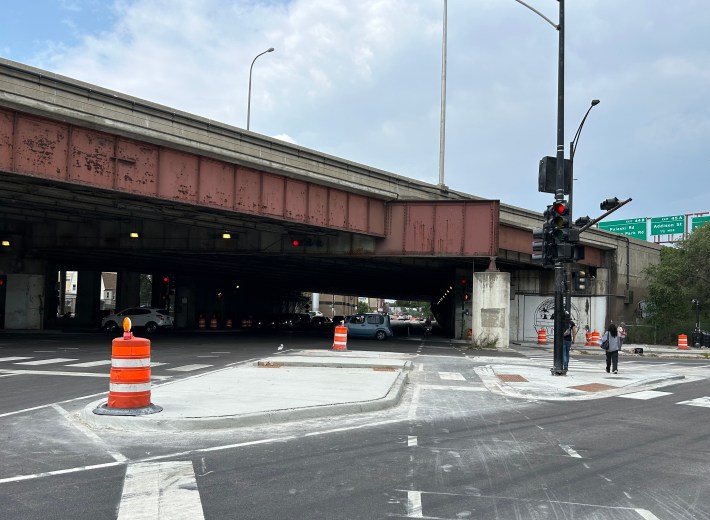
These islands exist only at side street intersections with four-way stop signs, where all drivers must make a full stop. The PBLs disappear at arterial intersections, allowing space for left and right turn lanes and sidewalk bus boarding. Motorists are still able to pass stopped buses at these signaled lights. And it should be noted that that makes these spots on the route the least safe for bike riders.
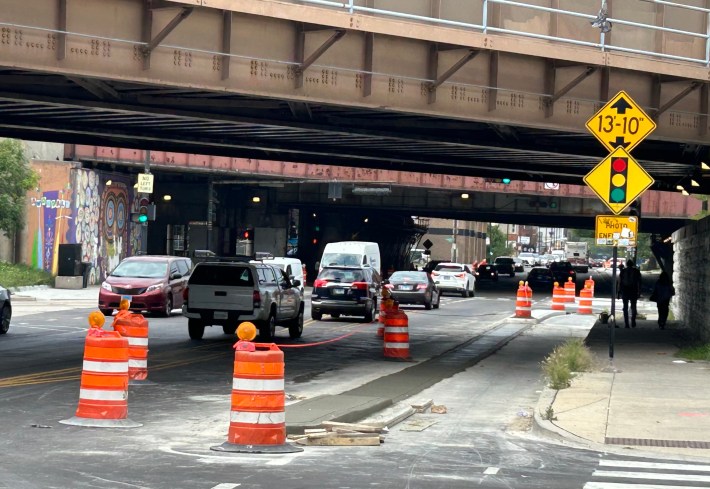
Passing back under the Kennedy viaduct westbound, the bike lane diverts onto the sidewalk, then to curb protection on the street, then back to the sidewalk briefly near the Bank of America west of the expressway. On-street curb protection continues a little further west, ending near Christiana Avenue.
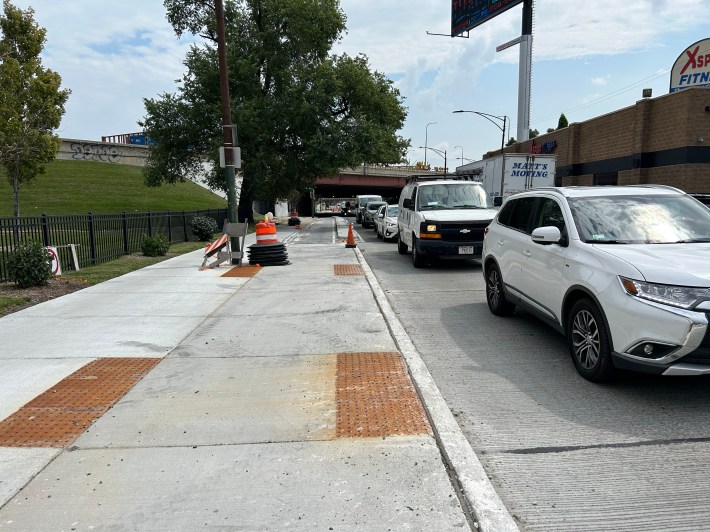
I crossed at Kimball to return to Kedzie, planning to turn right under the now-safer-but-still-awfully-dark-and-dank Kennedy viaduct. Instead, I was delighted to find a new curb-protected lane on the short leg of Avondale, a short, southeast-bound diagonal that connects Belmont to the southbound side of Kedzie. It was blocked off to drivers for workers putting the finishing touches on a new curb cut. I thanked them as I rode by, making a soft turn onto the Kedzie protected lane.
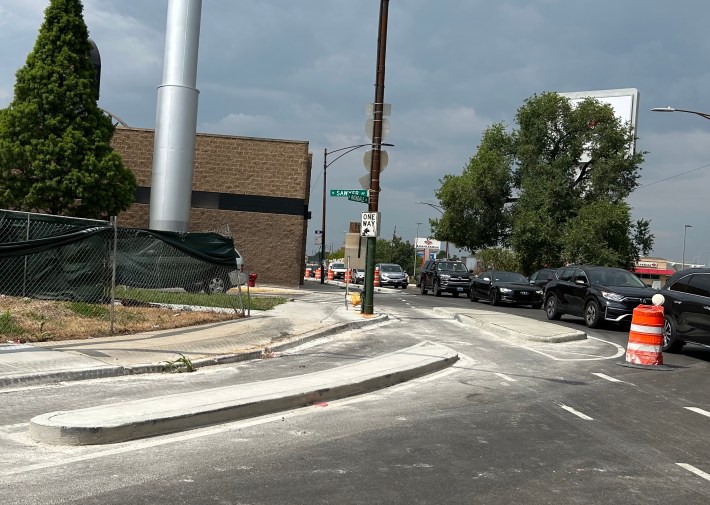
The Kedzie PBL ends at Diversey Avenue (2800 N.), just north of the Logan Square monument (aka the Illinois Centennial Monument) and the surrounding retail, restaurants, and cultural activities, and the second busiest farmers market in the city.
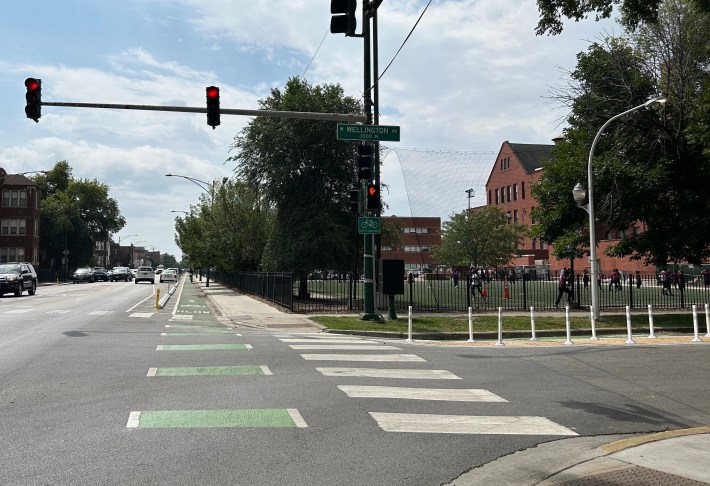
A logical next piece in the bike network puzzle would be extending the Kedzie protected lanes south to connect with the calm service lanes of Kedzie south of the monument. Advocates have been lobbying the Chicago Department of Transportation and Ald. Ramirez-Rosa to include PBLs in the sweeping plan for reconstructing the Logan Square Blue Line station and rerouting Milwaukee Avenue around the Logan Square plaza, so that it no longer passes through the green space.

In the meantime, the Belmont protected bike lanes are a game changer for those seeking a low-stress east-west bike route across the expressway and the river. Two weeks ago, I never biked on Belmont. Now it’s my new favorite route to Constellation, the Hungry Brain and destinations east on Belmont.

Did you appreciate this post? Please consider making a tax-deductible donation.
